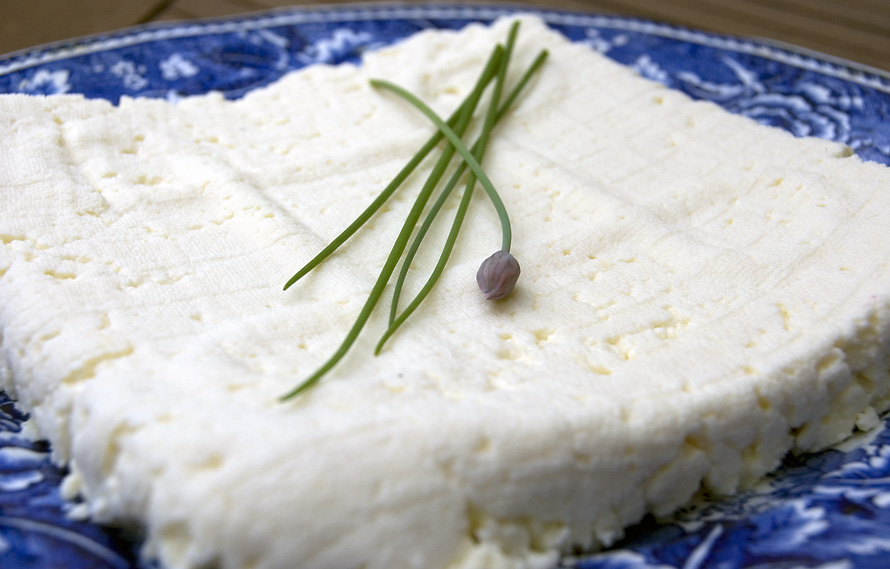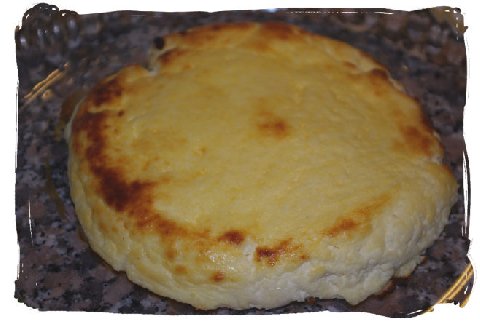You are using an out of date browser. It may not display this or other websites correctly.
You should upgrade or use an alternative browser.
You should upgrade or use an alternative browser.
Homemade labneh- cheese
- Thread starter sister herb
- Start date
sister herb
Official TTI Chef
I could say that taste is not just same than yoghurt with salt (and herbs if you add them), because part of the liquid will drain away. Taste is more... rich.
That liquid you can also use to baking is you like.
Sometimes I make at home different kind of cheese: boil milk, buttermilk (what should be a little soir), eggs and salt together and flavor it by garlic and herbs.
(Baked) Egg cheese (munajuusto)
3 l whole milk
1 l buttermilk
5 eggs
1 tsp salt
Let two of the eggs and the buttermilk — unopened, in its carton — stand at room temperature for a few hours or overnight.
Later, or on the next day, bring the milk slowly to the boil in a very large, thick-bottomed saucepan, stirring continually. If the milk is brought to a thorough but brief boil, the resulting cheese will have a better, lighter consistency. Break the two eggs in a bowl and whisk together with the buttermilk.
Pour the buttermilk mixture in the hot milk in thin stream, whisking continually. Bring the mixture to the boil again, but remove from heat straight away. The mixture must not be allowed to cook any more. Cover the pan and let stand in a warm place for half an hour for the curds and whey to separate. If the mixture is left to stand for too long, it will become too tough.



Curd and whey slowly separating
When the whey has turned clear, transfer the resulted curd with a slotted spoon to a strainer lined with clean cheesecloth dampened with boiling water. Drain the curd thoroughly and transfer to a bowl. The left over whey can be used as liquid for bread doughs, pancake batters etc.
Stir in two and a half lightly beaten eggs and the salt. Reserve the remaining half an egg for glazing. Beat the mixture for a few minutes with an electric mixer, until it is smooth. Spoon the mixture into a wooden or plastic cheese mould lined with a clean cheesecloth dampened with boiling water. If you do not have a special mould, use a bowl-shaped, cheesecloth-lined strainer instead.



Cheese mould Line the mould with cheesecloth




Fill the mould with curd Cover the mould
Cover the cheese by lifting the overhanging edges of cheesecloth over it and place a light weight on top. Place the mould in refrigerator overnight and let any extra liquid run out into a bowl or a deep plate placed underneath the mould. There wont be much liquid coming out from the cheese, but it has to be pressed to make it firm.

On the next day, unmould the cheese, brush the surface with the reserved half an egg and bake at 225 °C for 15 - 30 minutes or until the cheese is golden brown on surface and golden inside.
In picture above: pressed, unbaked fresh cheese.
Serve the cheese warm, either as a dessert with jam and vanilla-flavoured whipped cream, or as a savoury snack with bread, pastries, etc.
Egg cheese can be stored for several days in refrigerator, wrapped in parchment paper. Do not use tightly sealed plastic wraps or bags for wrapping or the cheese will turn sour.
You can eat it without baking as fresh cheese:

or bake it in oven:

That liquid you can also use to baking is you like.
Sometimes I make at home different kind of cheese: boil milk, buttermilk (what should be a little soir), eggs and salt together and flavor it by garlic and herbs.
(Baked) Egg cheese (munajuusto)
3 l whole milk
1 l buttermilk
5 eggs
1 tsp salt
Let two of the eggs and the buttermilk — unopened, in its carton — stand at room temperature for a few hours or overnight.
Later, or on the next day, bring the milk slowly to the boil in a very large, thick-bottomed saucepan, stirring continually. If the milk is brought to a thorough but brief boil, the resulting cheese will have a better, lighter consistency. Break the two eggs in a bowl and whisk together with the buttermilk.
Pour the buttermilk mixture in the hot milk in thin stream, whisking continually. Bring the mixture to the boil again, but remove from heat straight away. The mixture must not be allowed to cook any more. Cover the pan and let stand in a warm place for half an hour for the curds and whey to separate. If the mixture is left to stand for too long, it will become too tough.



Curd and whey slowly separating
When the whey has turned clear, transfer the resulted curd with a slotted spoon to a strainer lined with clean cheesecloth dampened with boiling water. Drain the curd thoroughly and transfer to a bowl. The left over whey can be used as liquid for bread doughs, pancake batters etc.
Stir in two and a half lightly beaten eggs and the salt. Reserve the remaining half an egg for glazing. Beat the mixture for a few minutes with an electric mixer, until it is smooth. Spoon the mixture into a wooden or plastic cheese mould lined with a clean cheesecloth dampened with boiling water. If you do not have a special mould, use a bowl-shaped, cheesecloth-lined strainer instead.



Cheese mould Line the mould with cheesecloth




Fill the mould with curd Cover the mould
Cover the cheese by lifting the overhanging edges of cheesecloth over it and place a light weight on top. Place the mould in refrigerator overnight and let any extra liquid run out into a bowl or a deep plate placed underneath the mould. There wont be much liquid coming out from the cheese, but it has to be pressed to make it firm.

On the next day, unmould the cheese, brush the surface with the reserved half an egg and bake at 225 °C for 15 - 30 minutes or until the cheese is golden brown on surface and golden inside.
In picture above: pressed, unbaked fresh cheese.
Serve the cheese warm, either as a dessert with jam and vanilla-flavoured whipped cream, or as a savoury snack with bread, pastries, etc.
Egg cheese can be stored for several days in refrigerator, wrapped in parchment paper. Do not use tightly sealed plastic wraps or bags for wrapping or the cheese will turn sour.
You can eat it without baking as fresh cheese:

or bake it in oven:

sister herb
Official TTI Chef
^^ What´s different between baked and non-baked egg cheese is that baked one taste a little more sweet; that´s why it is more suitable to eat also as dessert with jam or with cinnamon.
